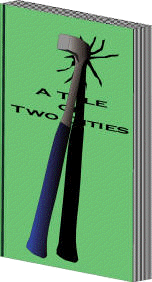Geology Through Literature:
Hans Christian Andersen's: Beautiful (1859)
Beautiful (1859)
It was a delight to hear Mr. Alfred speak. He told them of Naples, of trips to Mount Vesuvius, and showed them colored prints of some of the eruptions. The widow had never heard of such things before, much less taken time to think about them.
"Mercy save us!" she said. "So that's a burning mountain! But isn't it dangerous for the people who live there?"
"Entire cities have been destroyed," he answered. "For example, Pompeii and Herculaneum."
"Oh, the poor people! And you saw all that yourself?"
"Well, no, I didn't see any of the eruptions shown in these pictures, but I'll show you a drawing I made of an eruption I did see."
He laid a pencil sketch on the table, and when Mamma, who had been studying the highly colored prints, glanced at the black-and-white drawing, she cried in amazement, "When you saw it did it throw up white fire?"
For a moment, Alfred's respect for Kala's mamma nearly vanished; but then, dazzled by the light from Kala, he decided it was natural for the old lady to have no eye for color. After all, it didn't matter, for Kala's mamma had the most wonderful thing of all—she had Kala herself.
We head back to Mount Vesuvius, as we talked about previously with the What the Moon Saw story. The only thing to add here of note was that Herculaneum was also well known by this time, with the excavation actually having started before the excavation of Pompeii in 1748. Herculaneum itself was discovered after Pompeii, in 1709, and systematic excavation beginning in 1738, a full decade before Pompeii. The note in the text about Mr. Alfred showing Mamma the "colored prints", I must assume that he means copies of colored paintings and drawings, since colored photography had yet to be invented.
 |
| Vesuvius in eruption, April 26, 1872. Original caption 'from a photograph taken in the neighbourhood of Naples''. (Palmieri and Mallet, 1873). Image courtesy of Oxford Sparks. |
However, an interesting note is that the first photograph of a volcanic eruption is believed to be the 1972 eruption of the very same Mount Vesuvius, which aided the Director of the Vesuvius Observatory, Luigi Palmieri, to document the eruption with a dramatic line drawing.

No comments:
Post a Comment
Due to the large number of spam comment (i.e. pretty much all of them). I have turned off commenting. If you have any constructive comments you would like to make please direct them at my Twitter handle @Jazinator. I apologize for the inconvenience.
Note: Only a member of this blog may post a comment.